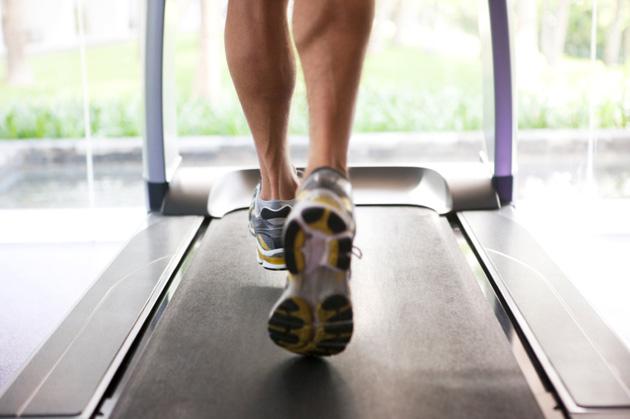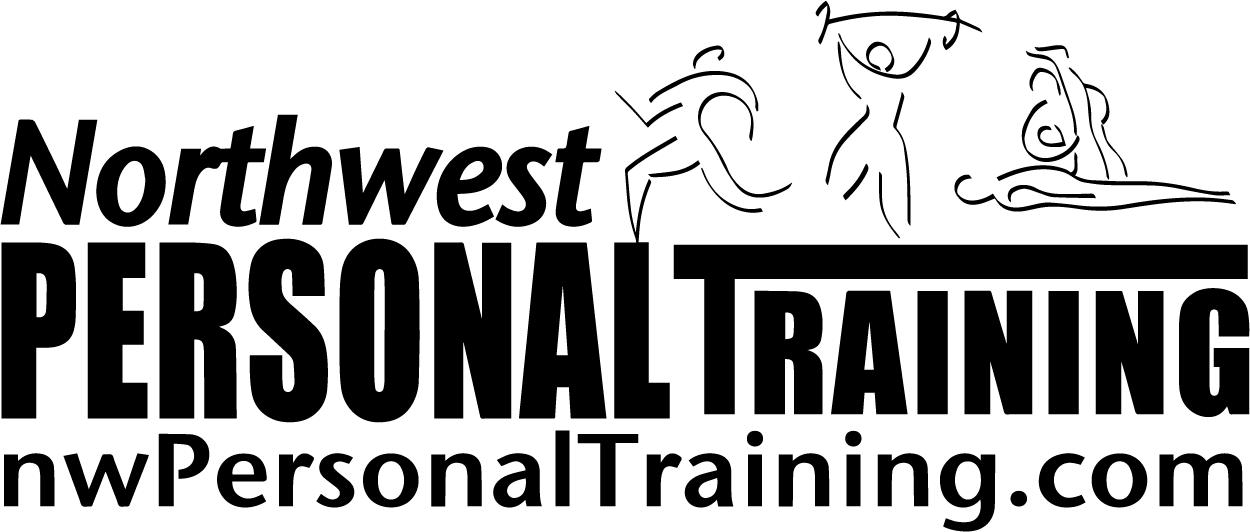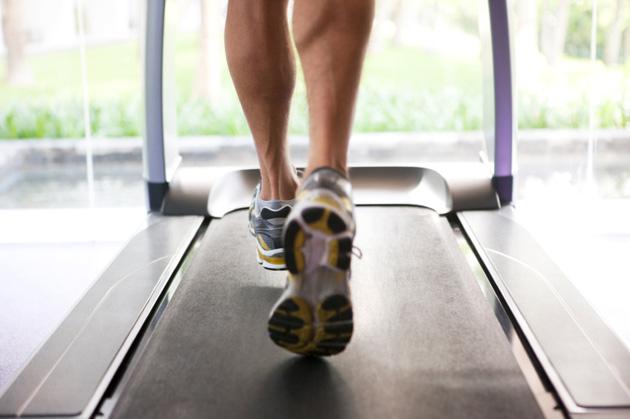The weather has been nasty lately leading most of us to retreat into the warmth and comfort of a fitness facility to condition our bodies. But many people waste a lot of time and energy training improperly on indoor cardio machines. Here’s a few tips to reduce the boredom and monotony of your indoor cardio workouts and assure your technique is top notch.
 Treadmill:
Treadmill:
The lineups to get onto a treadmill at most fitness facilities make it easy to believe that the treadmill remains the most popular indoor cardiovascular machine. The learning curve is quick – just get on, punch in a few numbers and start walking or running. Treadmills are popular amongst sports physicians and physiotherapists because they better absorb the impact forces associated with running. Treadmills allow you to avoid unfavourable weather conditions, go for a run in the evening without having to worry about the safety issues and avoid being startled by the neighborhood dog.
Technique tips:
- Make it a goal to not hold onto the rails while jogging or walking. Instead, use your muscles to balance and support your body.
- Keep your abdominals contracted, look forward and avoid swinging your arms side-to-side and crossing the mid-line of your body.
Treadmill workout idea:
- Warm-up. Do 1 minute of a walking hill climb. Then 1 minute of a flat, comfortable jog. Then 1 minute of a flat sprint. Then 1 minute of a flat, recovery walk. Do this 5 times for a 20 minute workout. Cool-down
- Once a month, try a time-trial workout. Program in a distance like 5km (3miles) and record how long it takes you to complete. Next month, try it again and this time try to go a little faster. As you get fitter, you should be able to perform the same distance in a shorter period of time.
Eliptical Trainer:
The word on the street is that these machines, looking very similar to a stairmaster, are gaining popularity and may soon rival the treadmill for exercisers’ favourite piece of equipment. The Eliptical is a cross between a stairmaster, treadmill and ski machine with some models allowing you to stride forwards and backwards, some offering poles to train your upper body at the same time and others offering an incline ramp to enable exercisers to increase the intensity and simulate outdoor hiking.
The benefits are tremendous which explains its popularity:
- It’s very easy to do correctly – the learning curve is very quick.
- Because of the design of the machine, muscles in the lower body can be targeted differently and better than most traditional machines. Models with poles effectively condition all major muscle groups.
- Elipticals provide more aerobic work than other machines at the same perceived effort.
- Because of the design and the low-impact nature of the machine, potential injuries to the knee are minimized.
- Provides the high aerobic and muscular demands of running with the low impact of walking.
Technique tips:
- If your Eliptical does not have poles, do not lean onto the rails. Instead, develop the balance and stability to use the machine without holding on. Pump your arms just like you were running.
- While exercising, make sure that you’re knee caps always point forwards. Avoid allowing your knees to collapse inwards.
- While exercising, try to keep the weight of your body distributed evenly on all 4 corners of your feet. Avoid allowing your arches to collapse inwards – avoid pronating.
Eliptical Trainer Workout idea:
- Warm-up. Start at a moderate resistance for 1 minute. Every minute increase resistance until you reach 5 minutes at a challenging pace Then drop back down to the starting resistance. Repeat that 4-6x for a 20-30 minute workout.
- Once a month, try this workout test. Program in a 10 minute manual workout. Record how far (in miles or kilometers or steps climbed) you get at the completion. Next month, try it again and this time try to go a little farther in the 10 minute time-frame. As you get fitter, you should be able to go further and further in 10 minutes.
Stairmaster:
The stairmaster can be a very effective piece of equipment for helping to burn body fat, improving stamina and endurance and conditioning the lower body. But it is probably one of the most poorly executed indoor exercises and one of the most difficult to learn to perform correctly.
Technique tips:
- Do not hold onto the rails while on the stairmaster. Most people hold on for dear life and take fast, choppy little steps. This technique is very ineffective at burning calories and maximizing fitness goals. Most of you will find that you’ll have to reduce the level you normally perform at once you let go of the rails, because your muscles will have to work so much harder to support your body weight. This increased intensity will get you results much more quickly and you’ll find you’ll also develop good balance and stability.
- The next important tip is to make sure that your steps are not too shallow. Think about the height of a step you would take while walking up the stairs and strive for this. Remember to work through the full range of motion. Tiny, fast steps are not effectively engaging the lower body muscles and instead, using a lot of momentum.
Stairmaster workout idea:
- Warmup. Try not holding onto the rails for 40 seconds and then holding on for 20 seconds. Do this for 20-30 minutes. Cool down.
Recumbent Biking:
With the onset of indoor cycling classes, biking inside has seen a surge in popularity. But for a lot of people, these classes are too challenging initially. A good starting point is to begin exercising on a Recumbent bike where you can develop your “biking” legs in a position where your back is supported and then slowly progress to trying out a group cycling class.
Technique tips:
- The most common error with technique on a bike is seat adjustment. It’s important to position the seat so that you are positioned neither too far back or too close. When the leg is in a fully extended position, you should only have a slight bend in the knee. Make sure your knee is not maintaining a large bend throughout the entire cycle and vice versa, make sure that the seat isn’t positioned so far away that you have to rotate your hips to spin.
- Because you’re reclined back, it’s easy to slouch while riding. Remember to keep upright posture throughout the entire workout. Keep your abdominals contracted inwards, your chest lifted and shoulders back.
Biking workout idea:
- Warmup. Choose a moderately challenging resistance. Cycle hard for 30 seconds, then easy for 30 seconds. Complete for 20-30 minutes. Cool-down.
- Warmup. Choose a moderately challenging resistance. Cycle at a moderate speed for 1 minute. Then keep the resistance the same but speed up your legs/RPMs for 1 minute at a challenging past. Alternate for 20-30 minutes. Cool-down.
Yours in Health & Fitness,
Sherri McMillan
Like us on Facebook and get FREE instant access to my “Achieving your Personal Best” eVideo – Learn the critical steps to help you lose weight, feel great and live your best life.
Don’t forget to sign up to receive my blog posts in your inbox!
Just enter your name and email in the form up here



